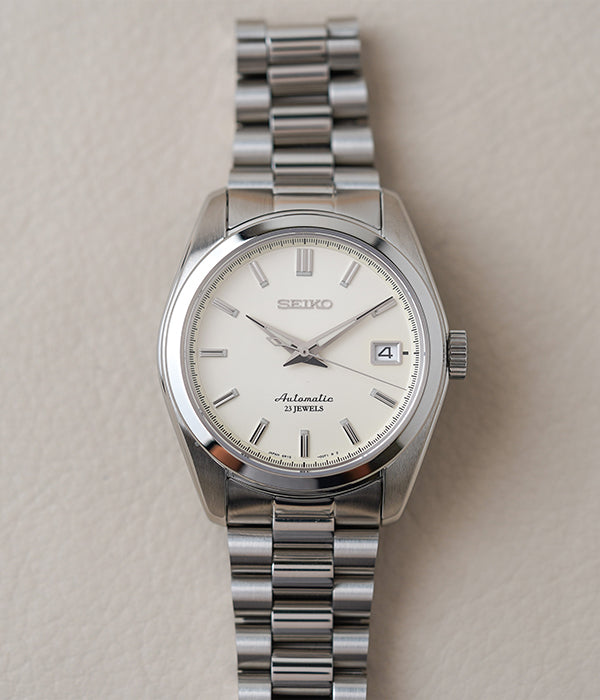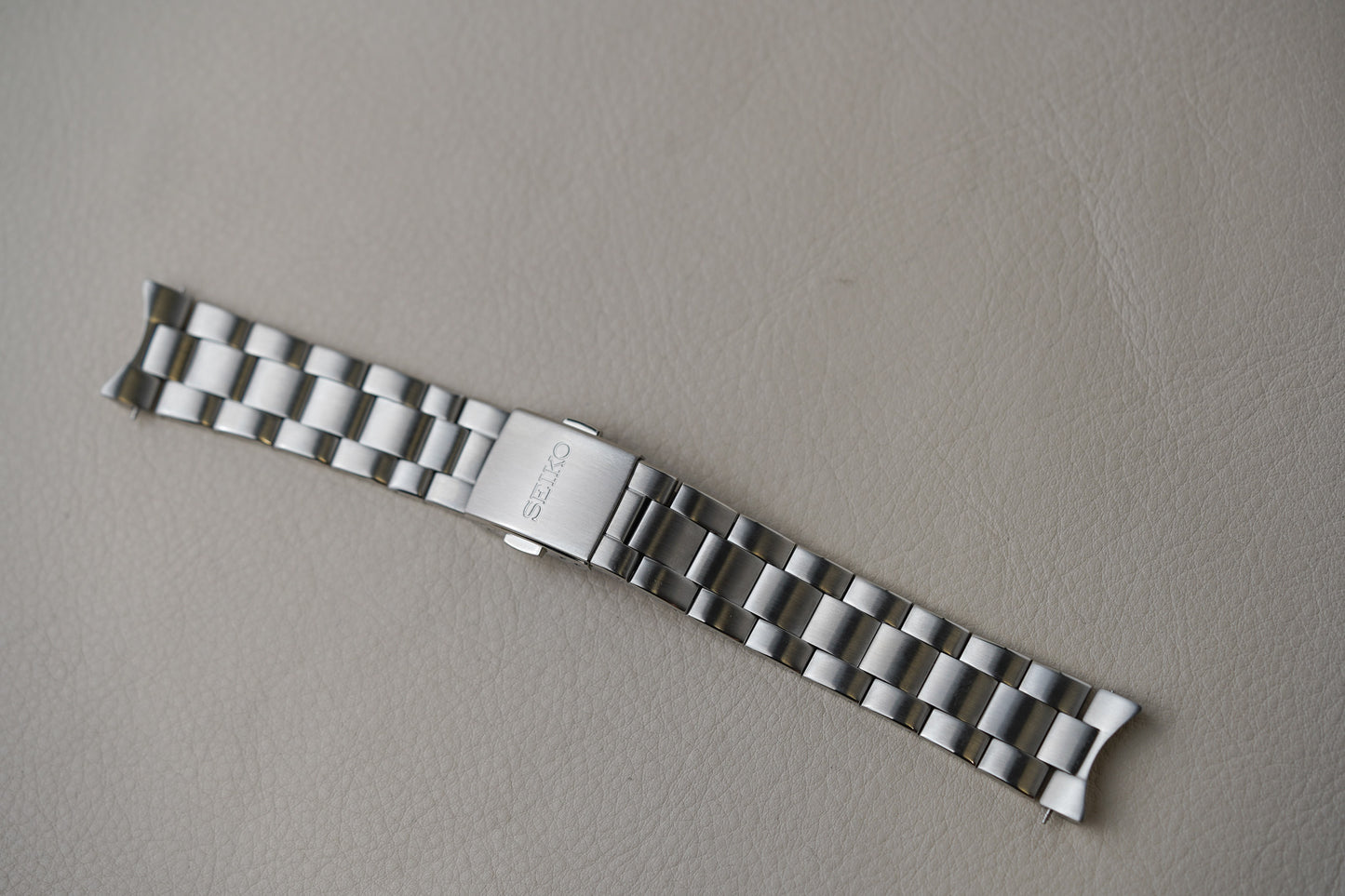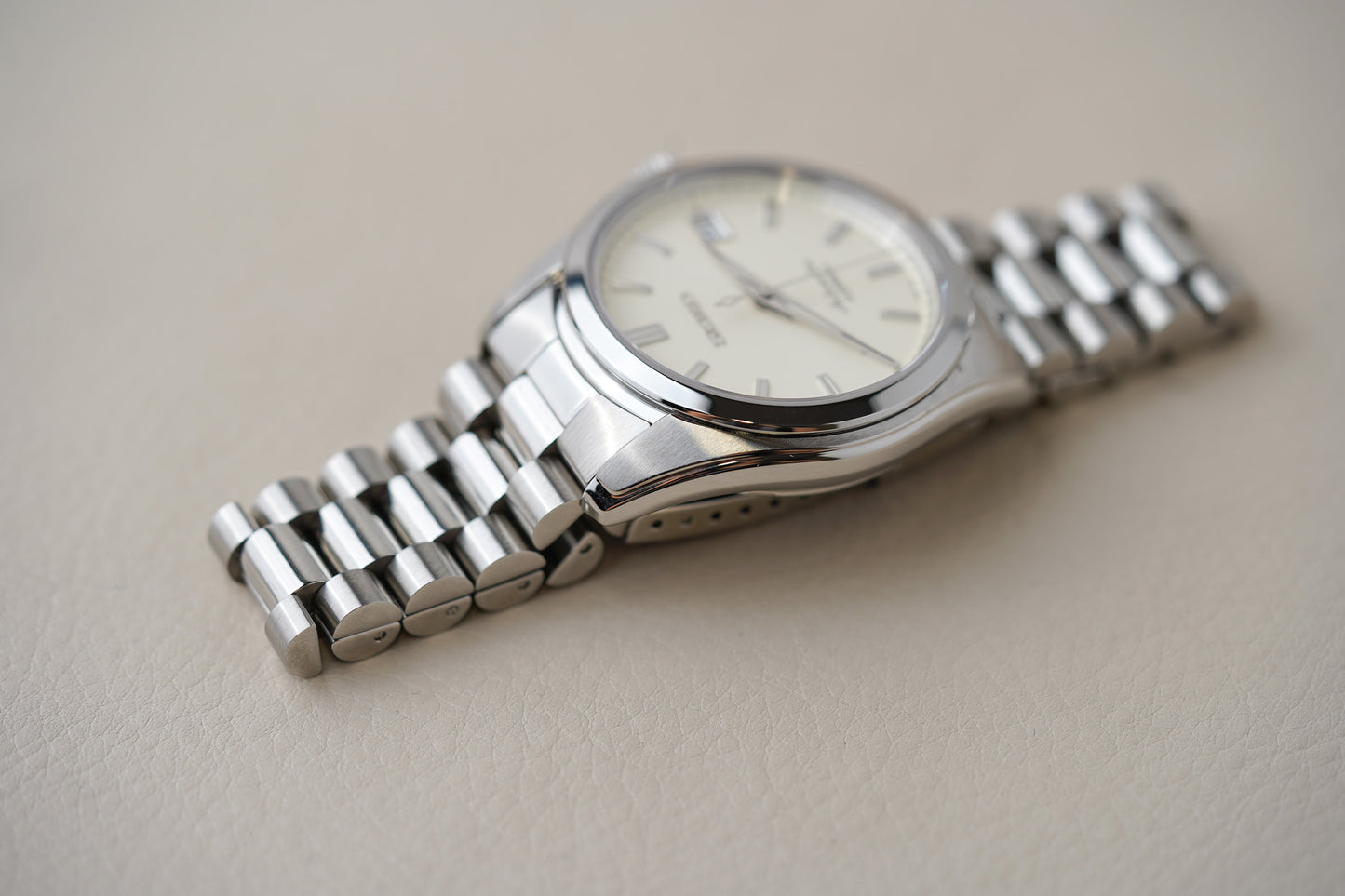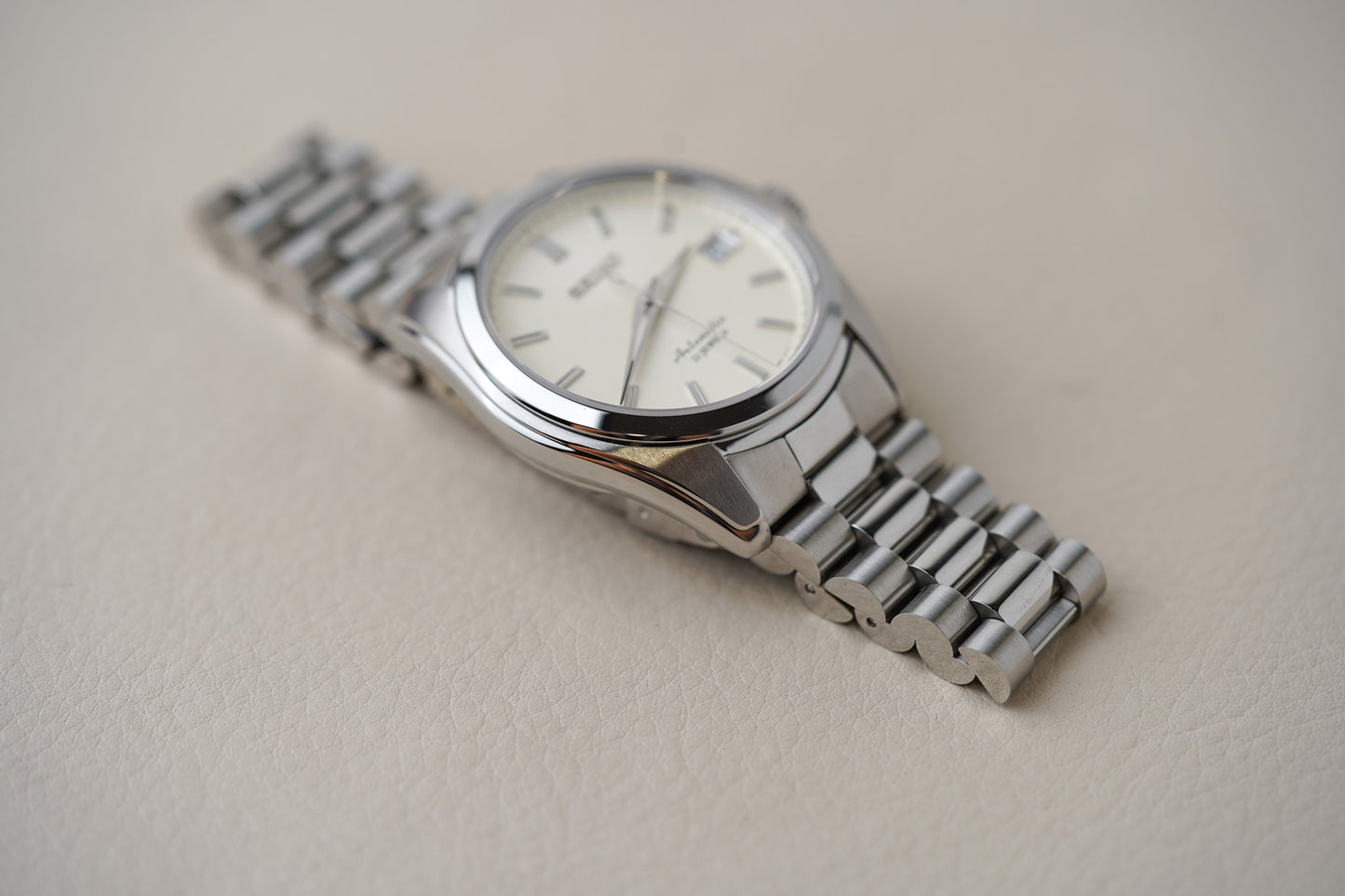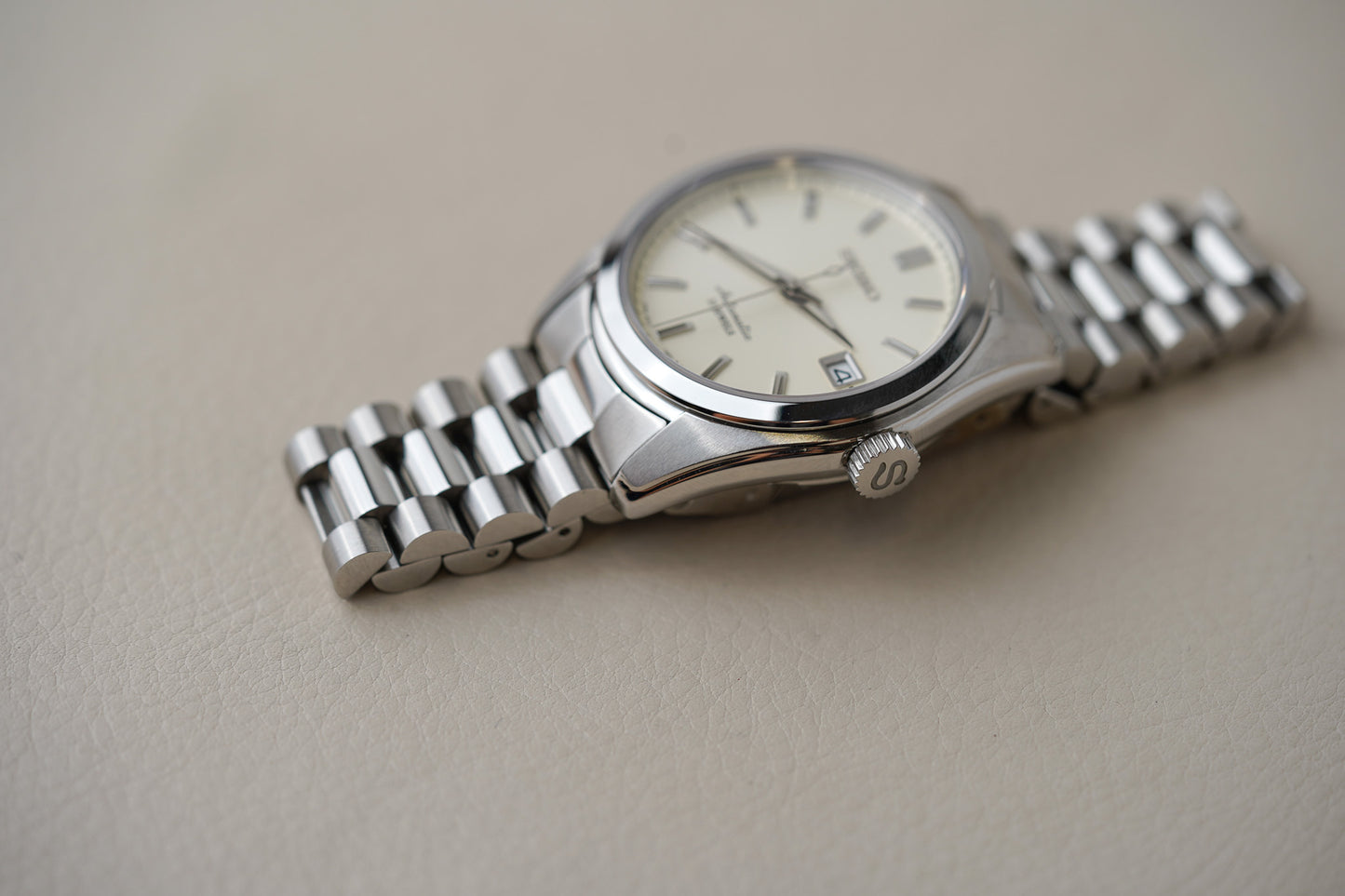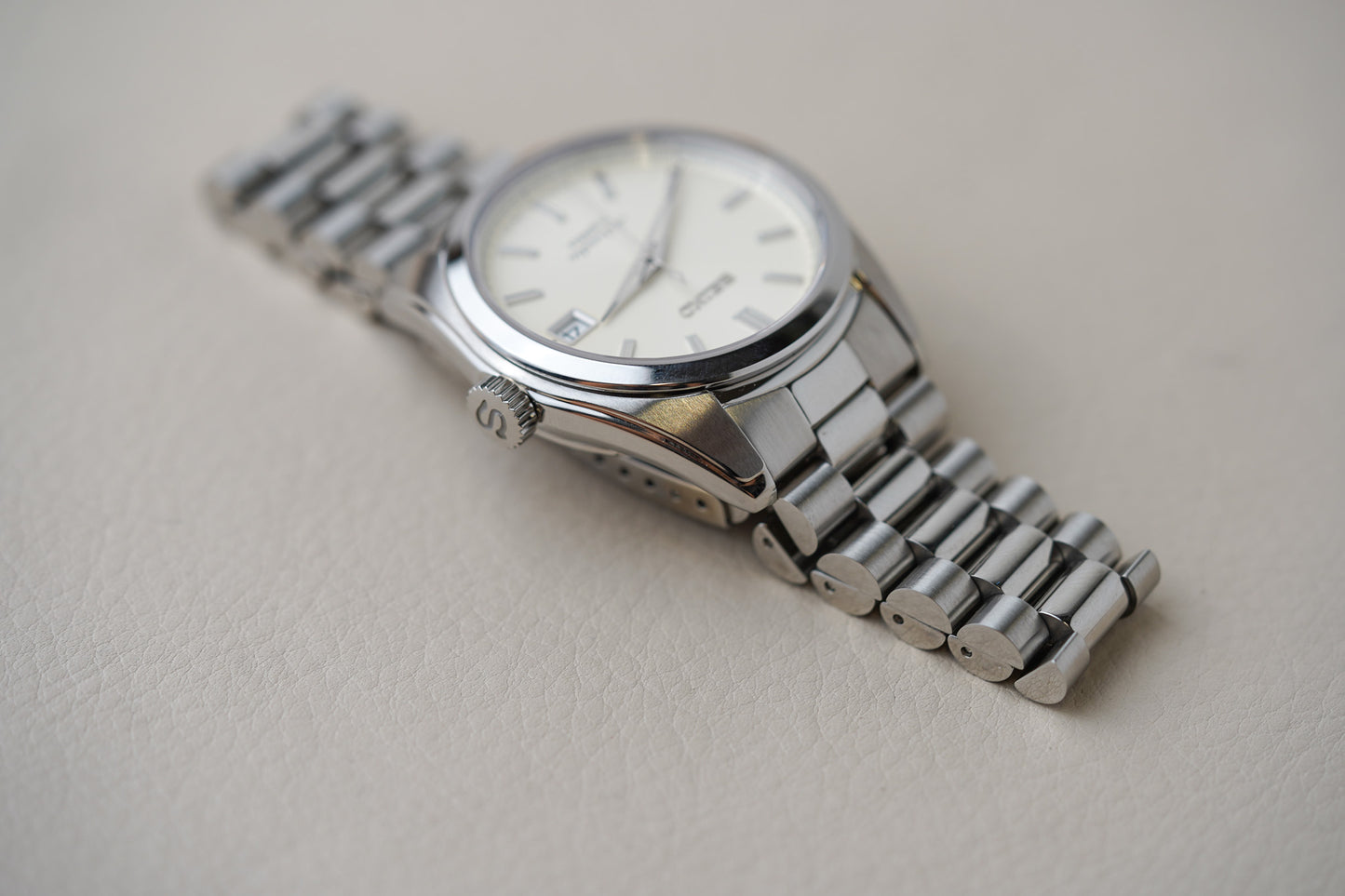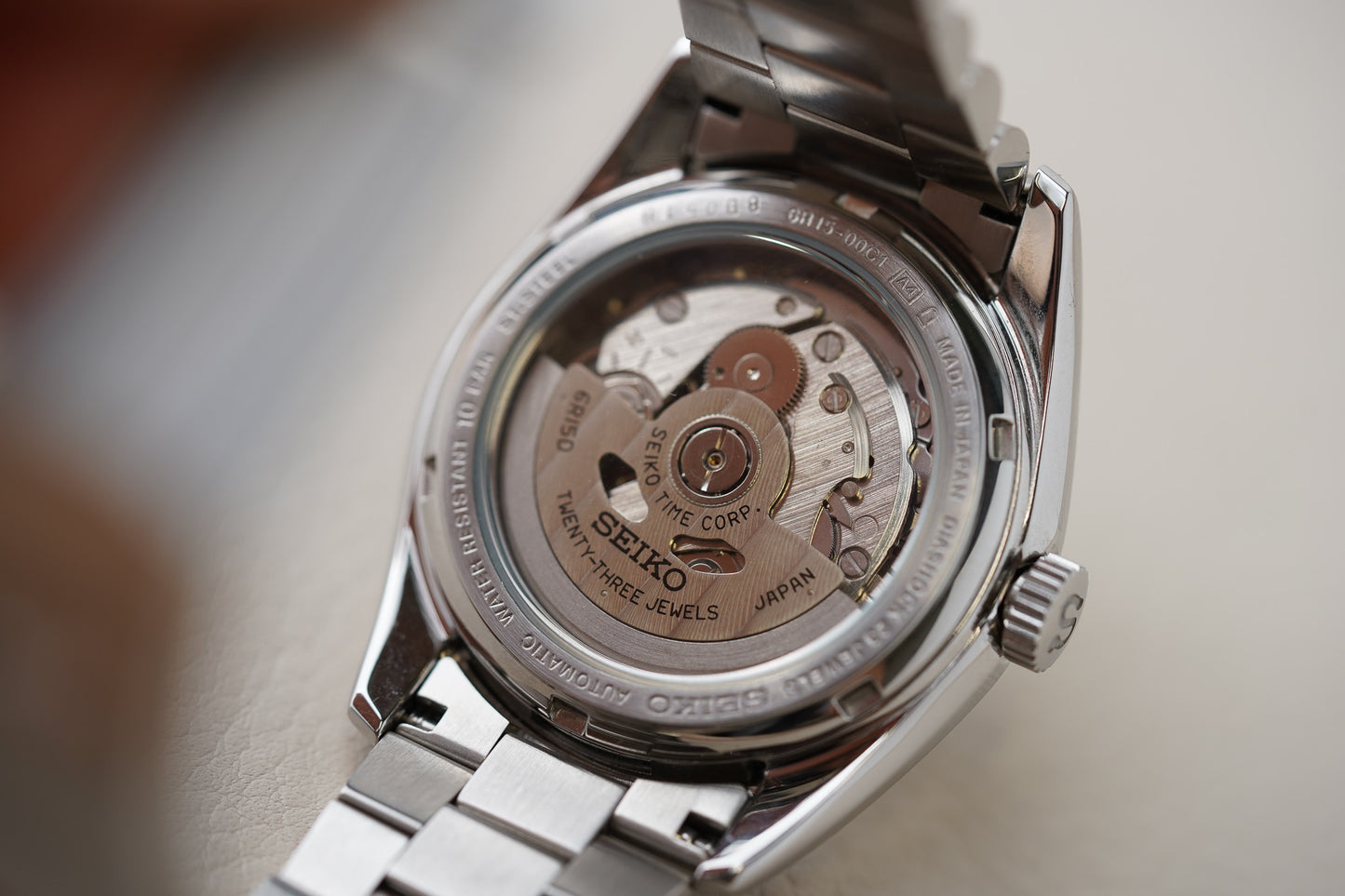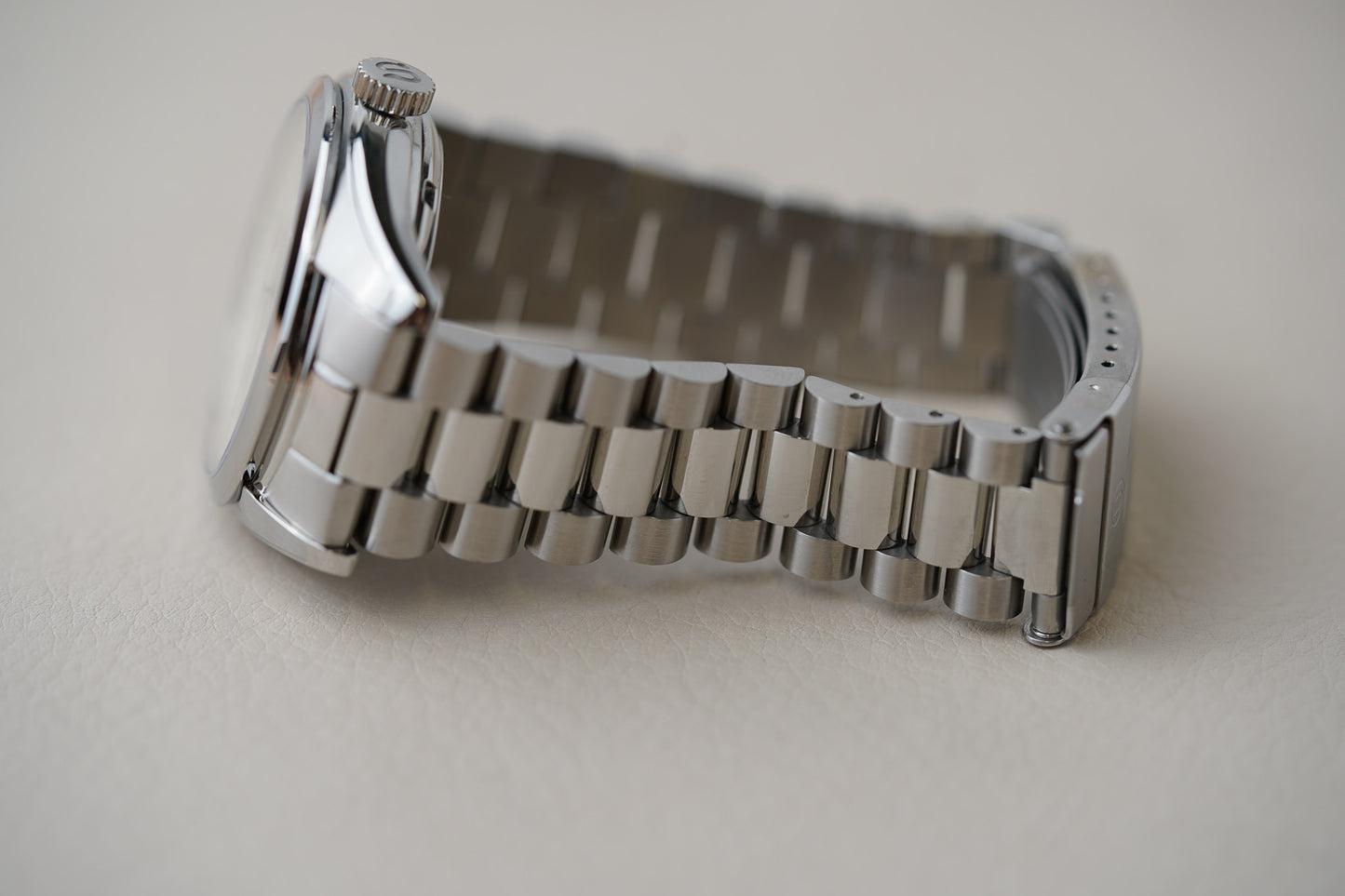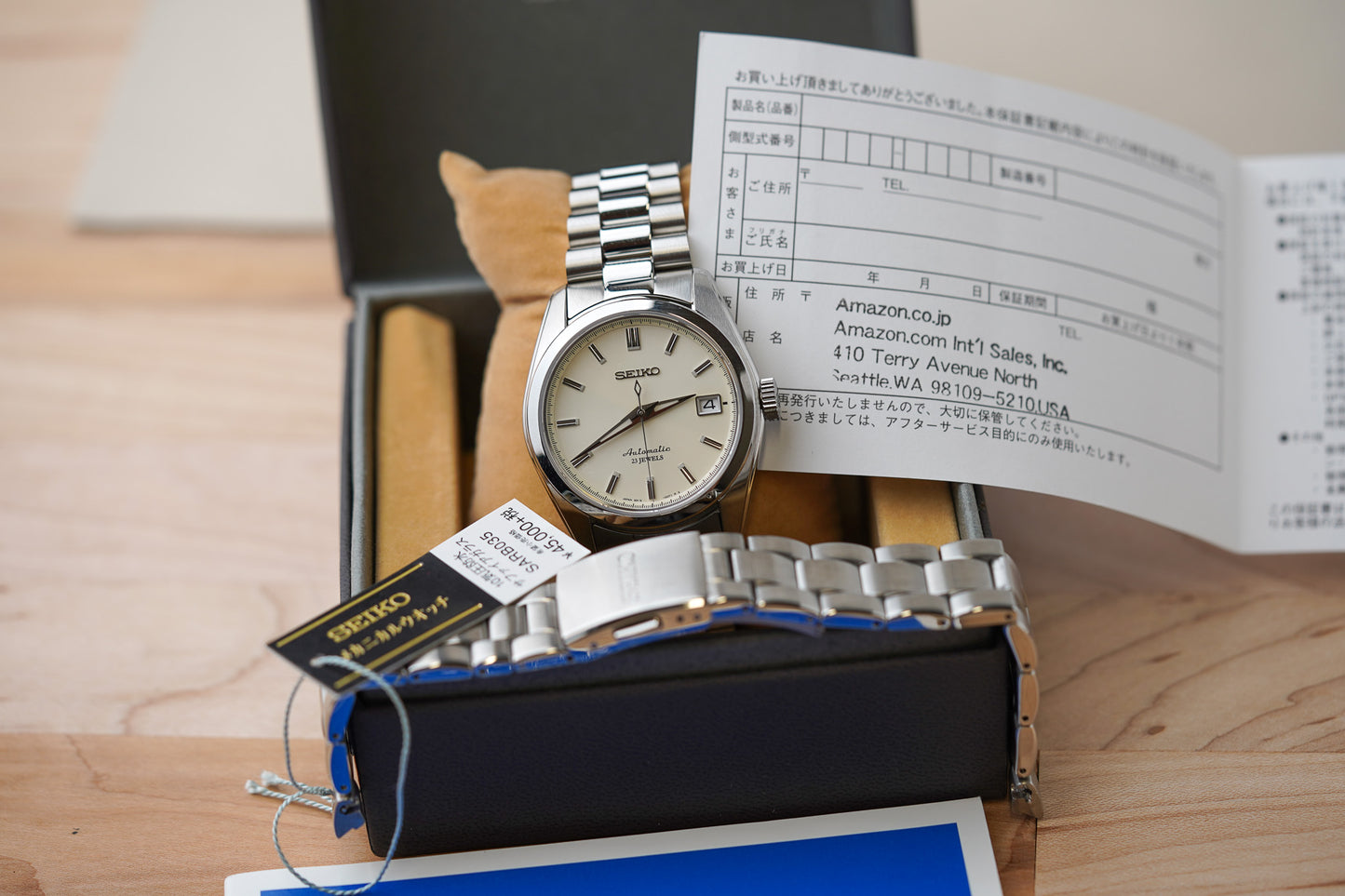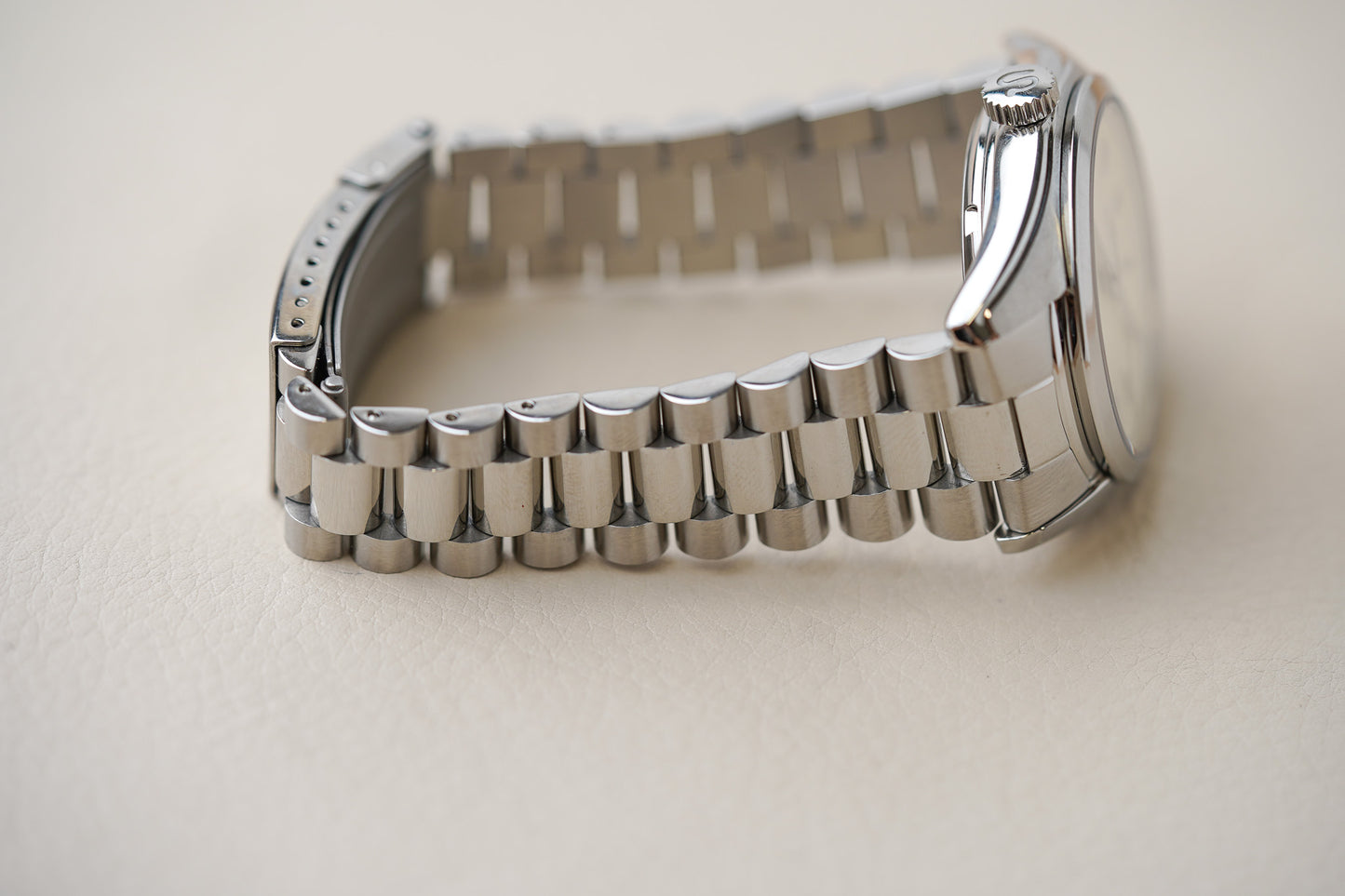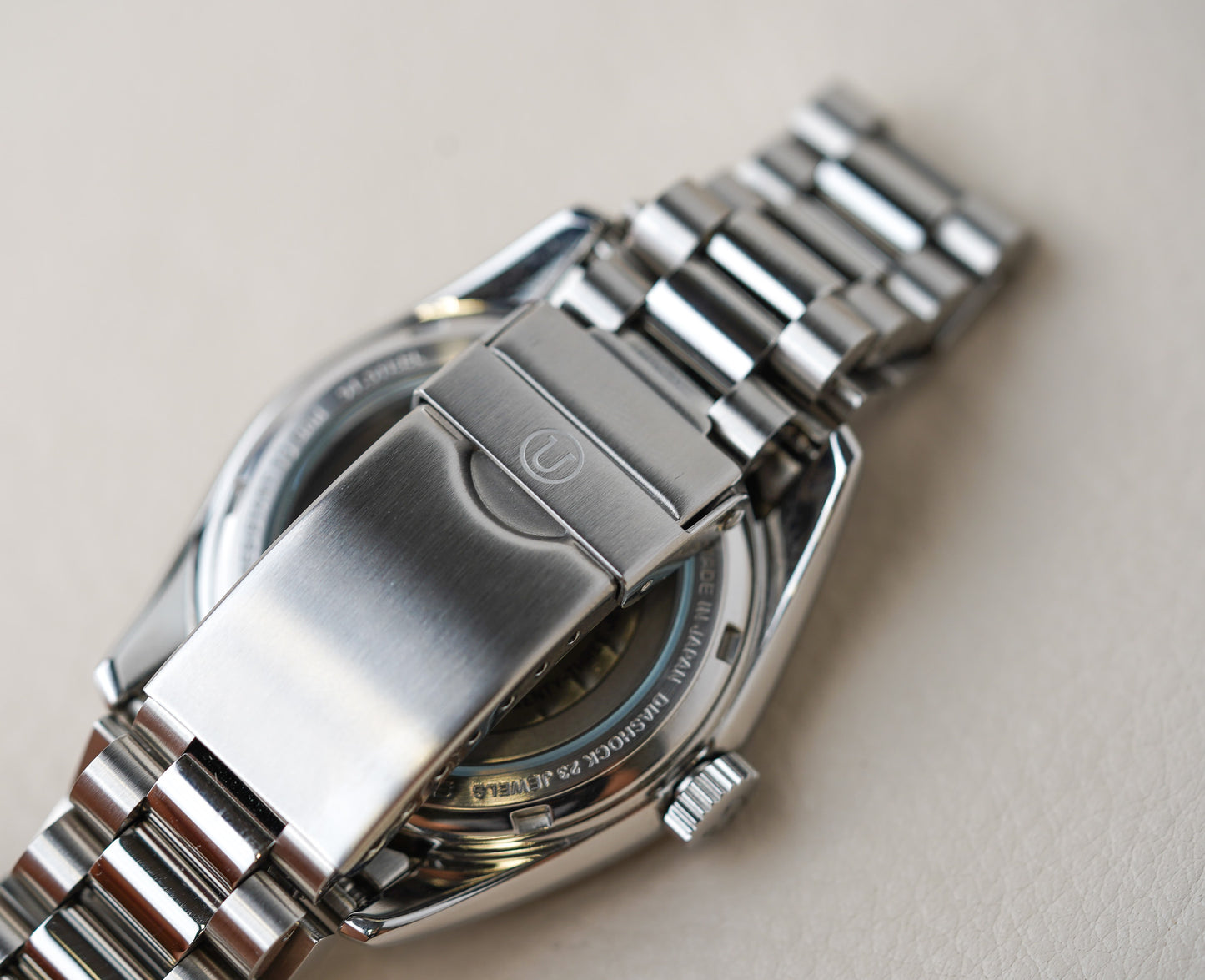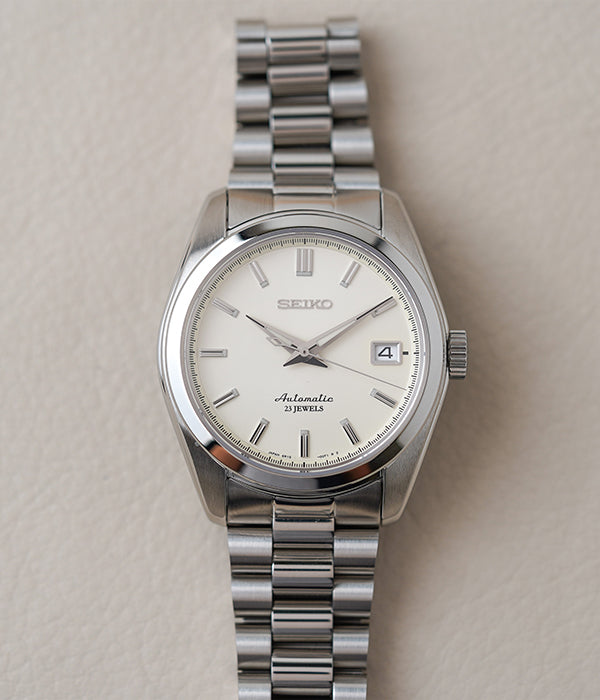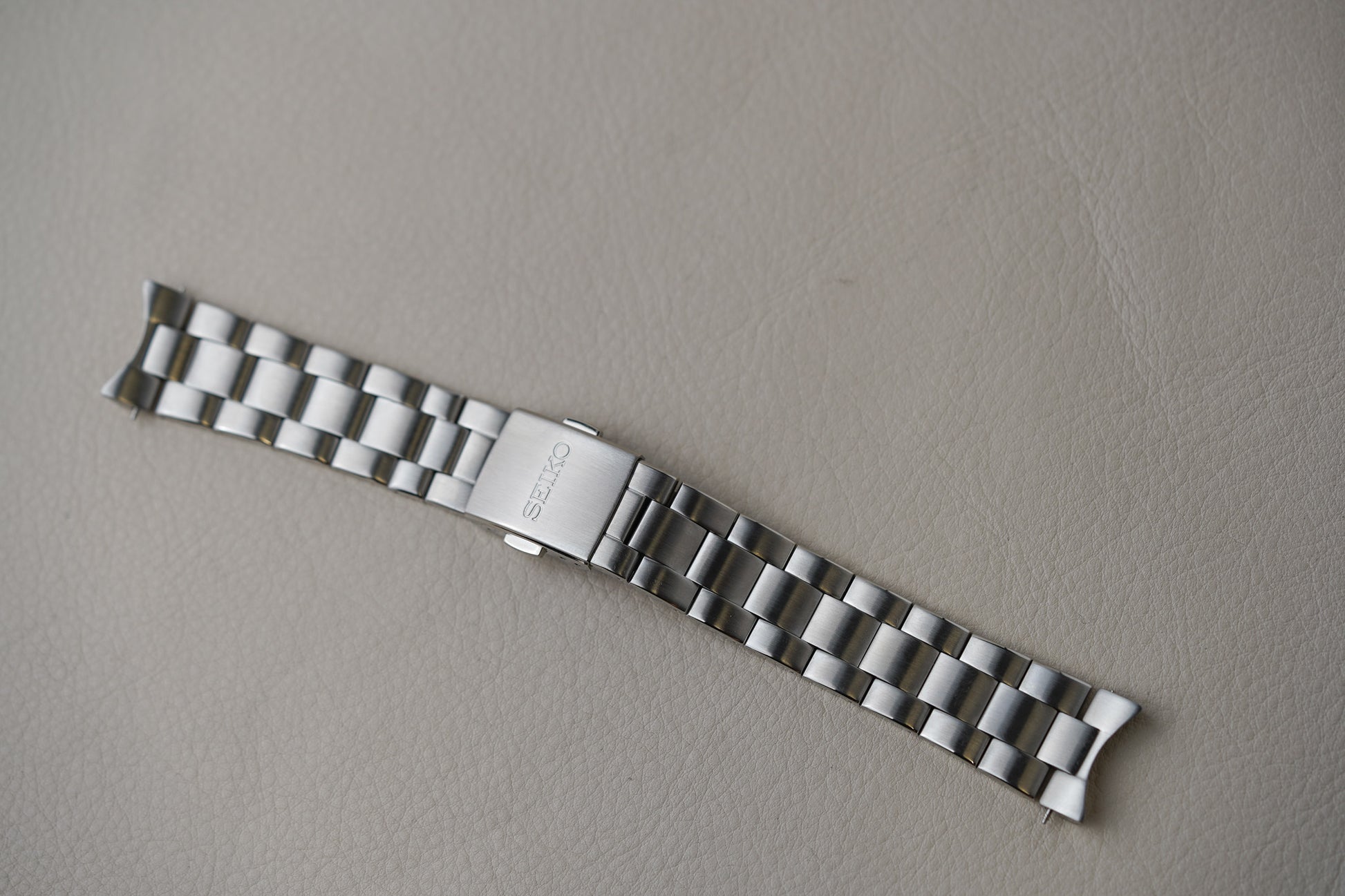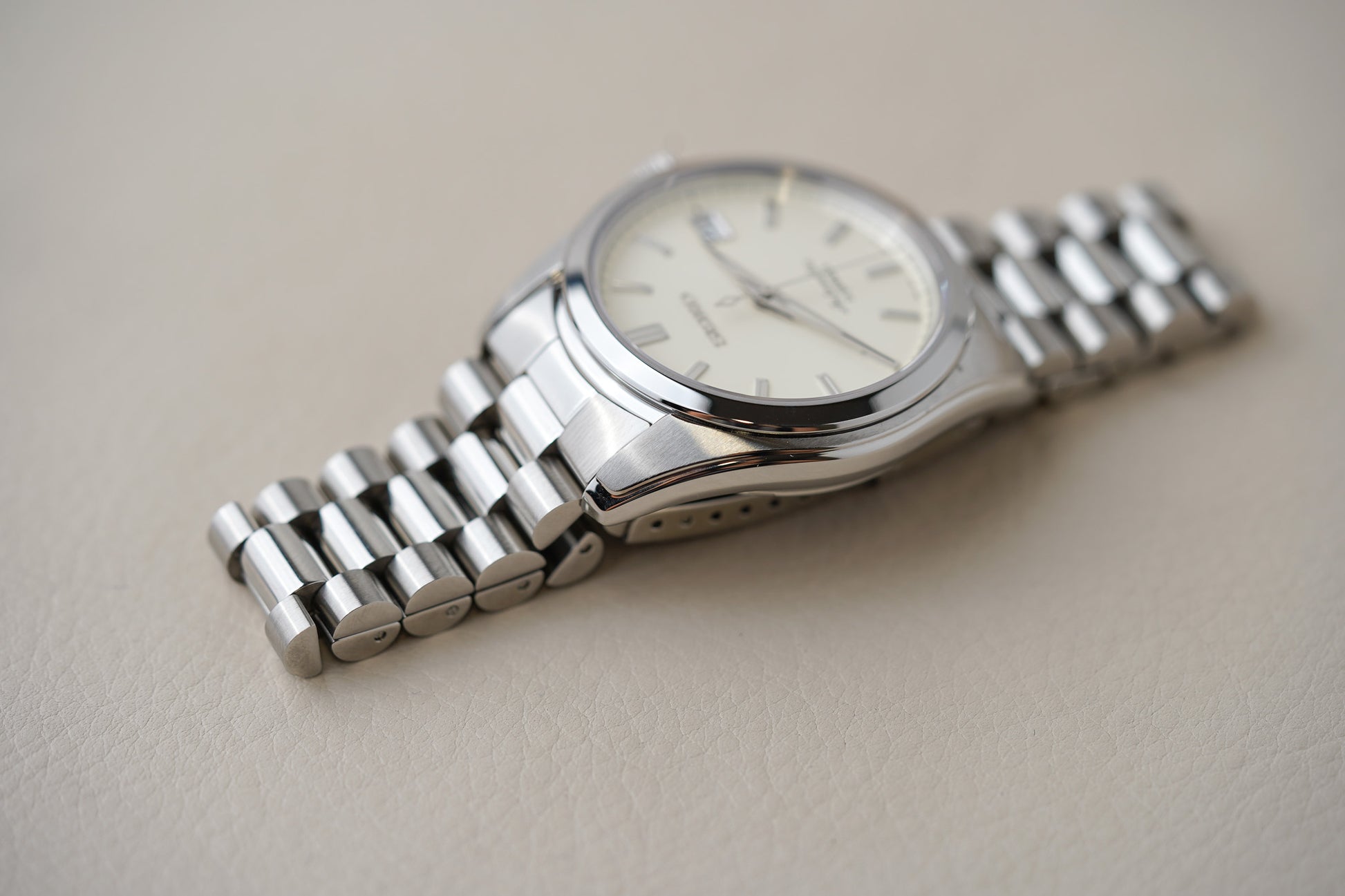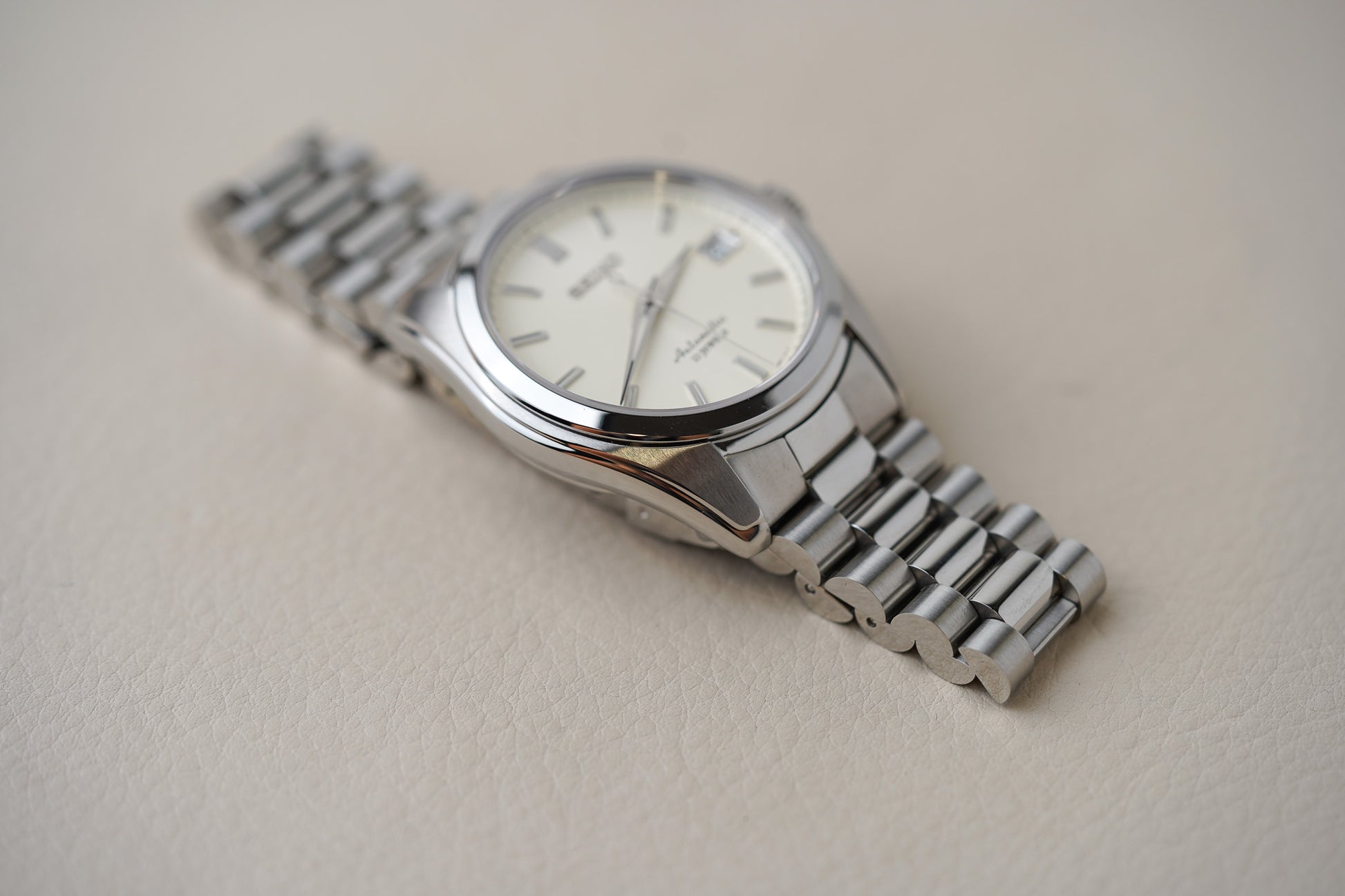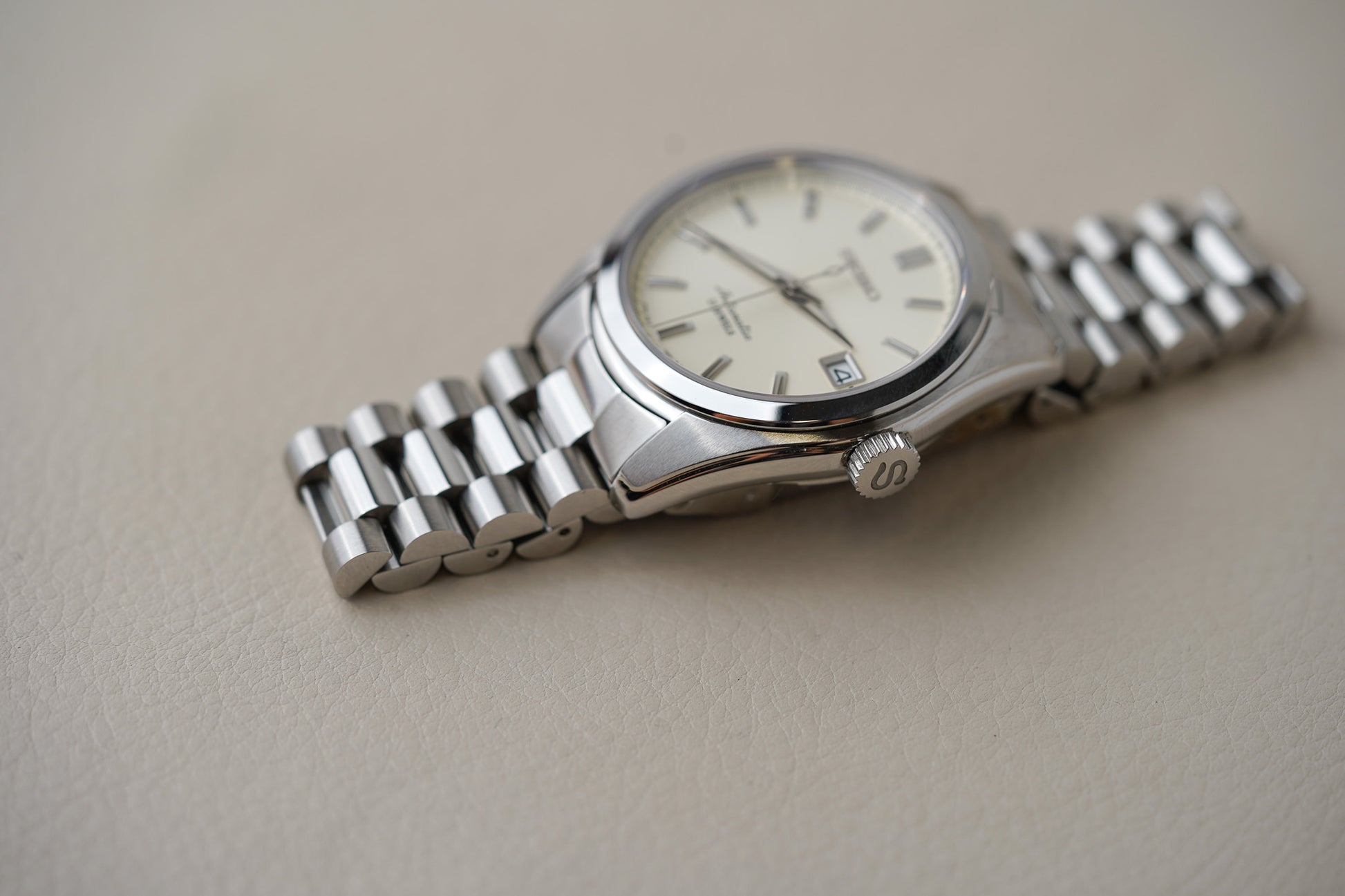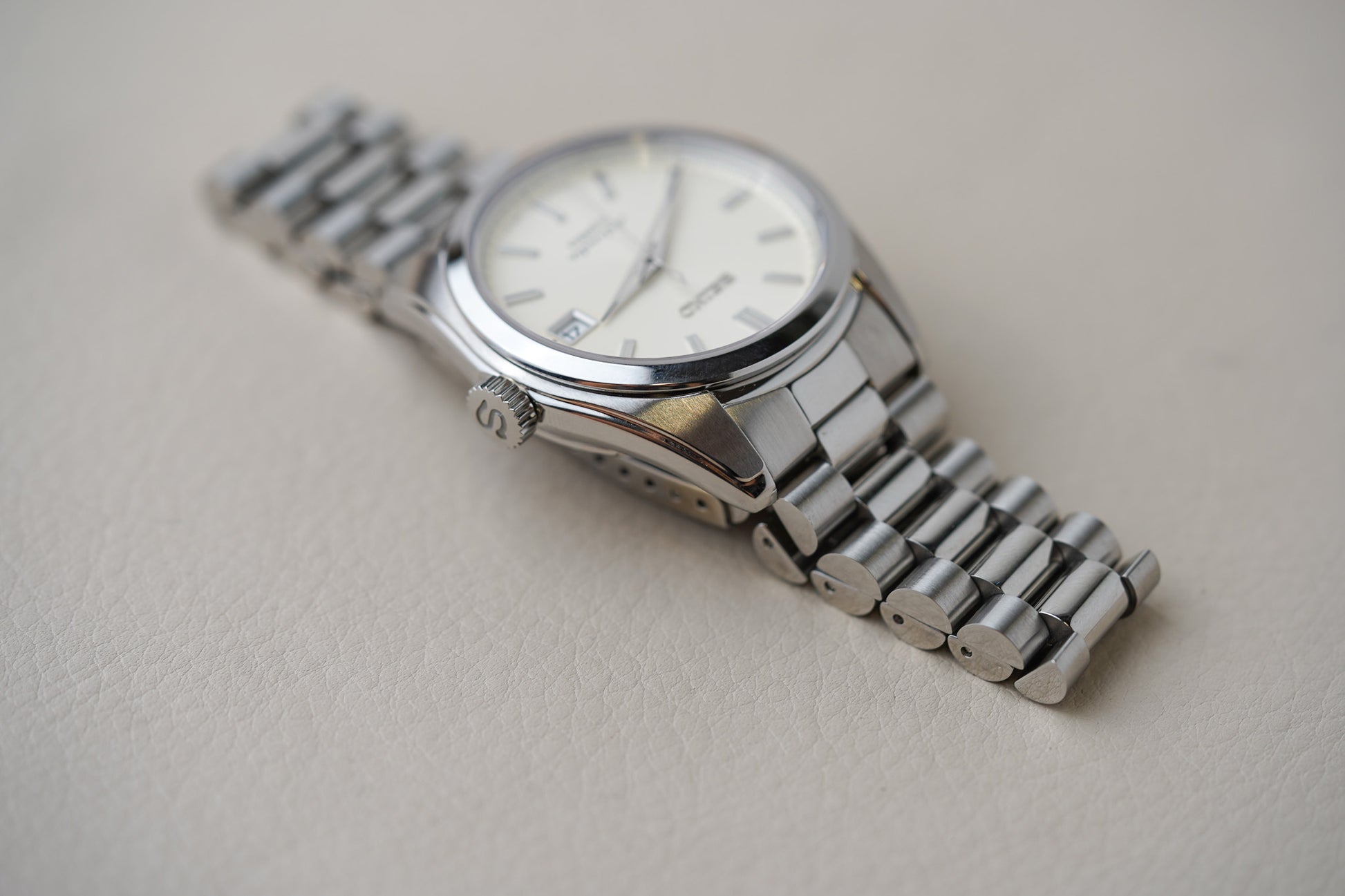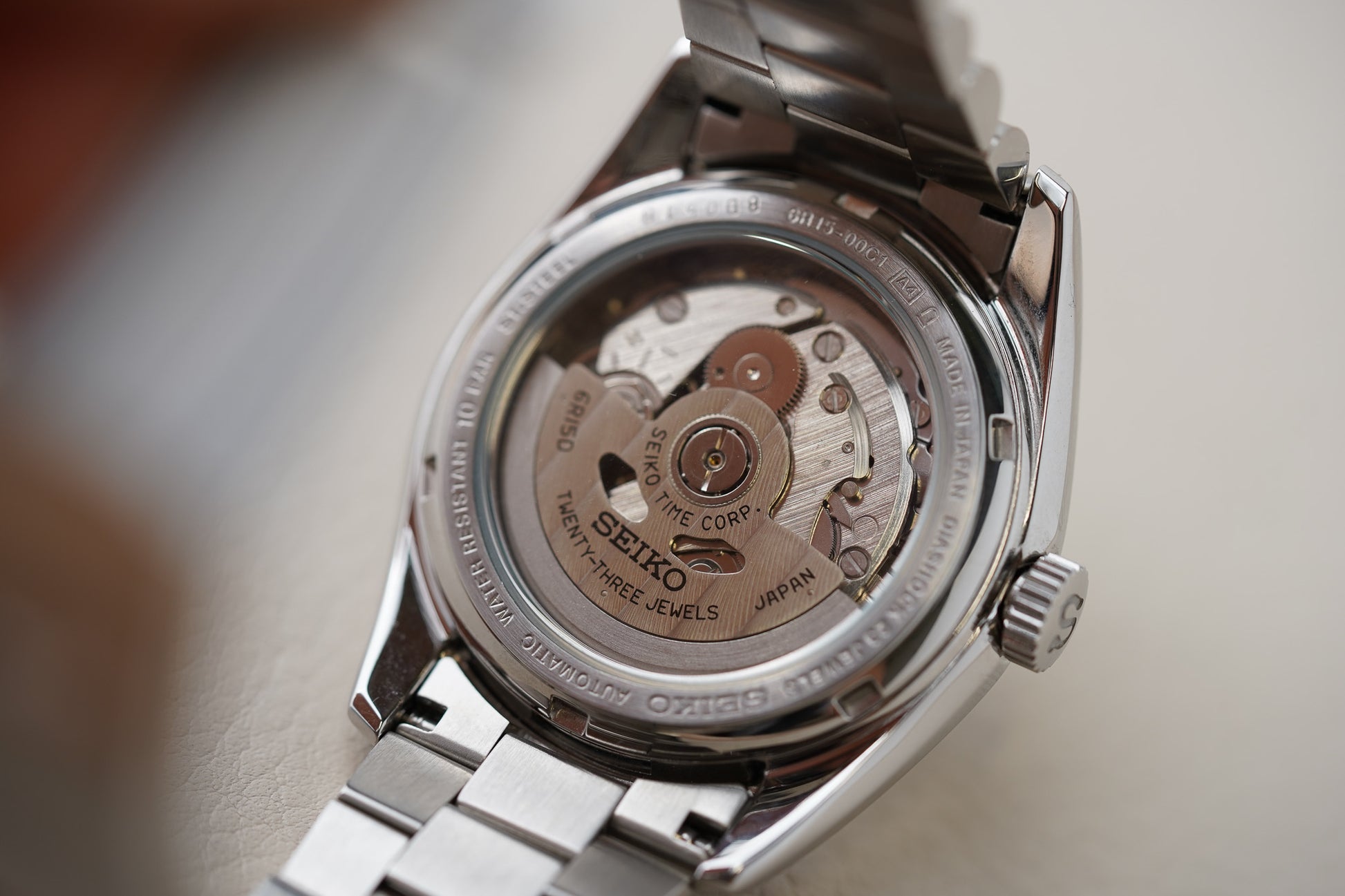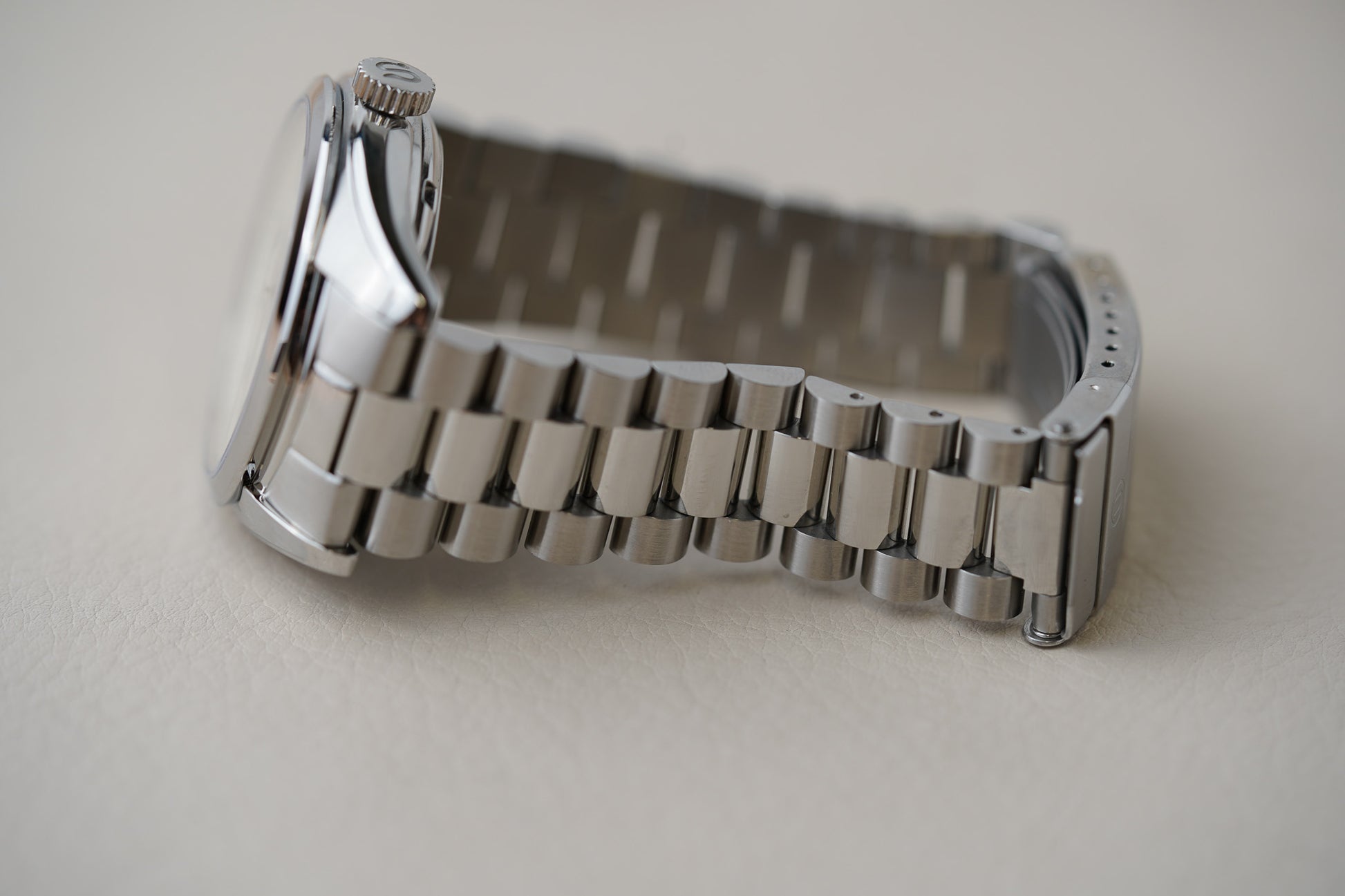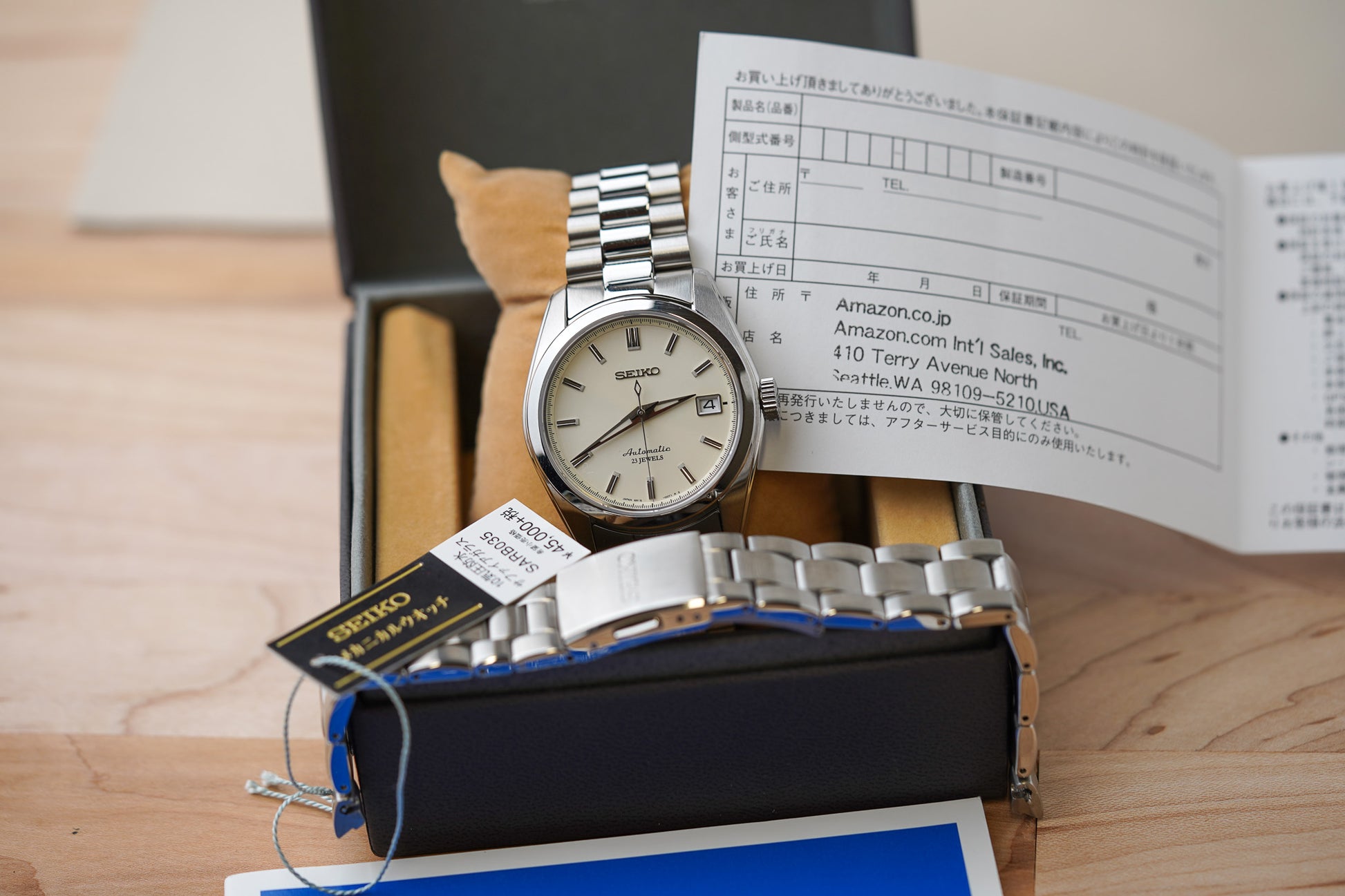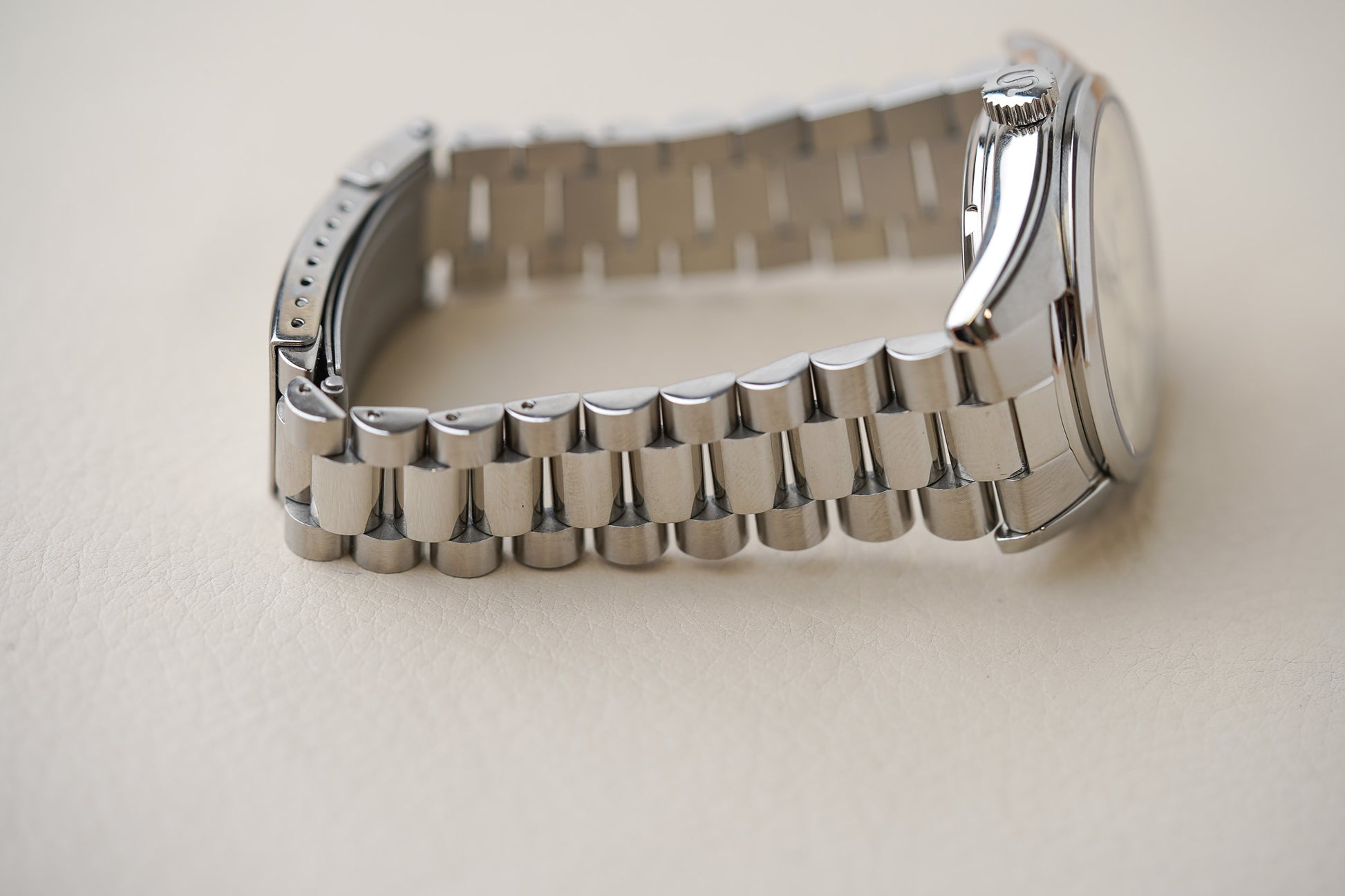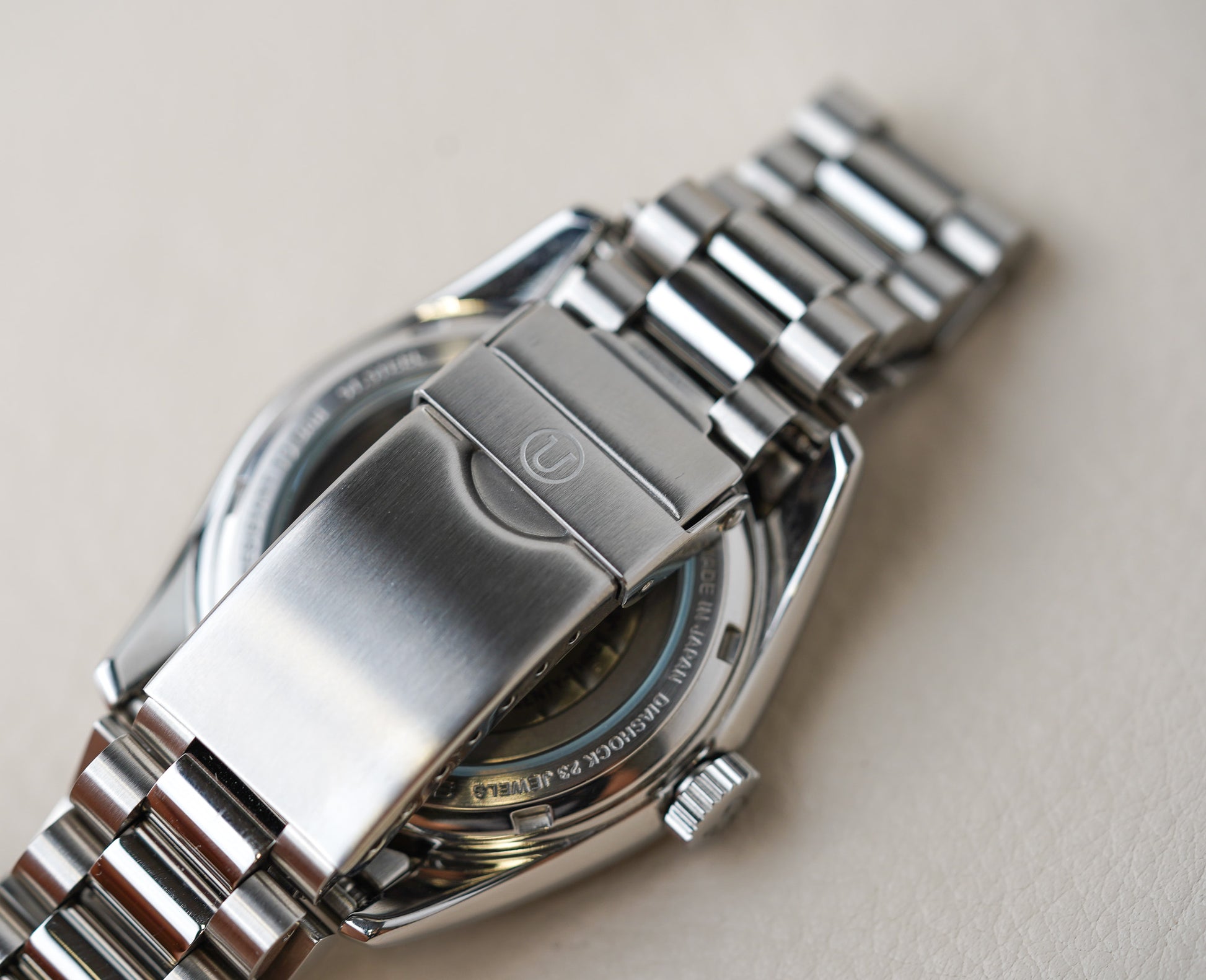Pre-Owned
Seiko Ivory Sarb035
Seiko Ivory Sarb035
Out of stock
Couldn't load pickup availability
- Authorized retailer for 3 brands
- Contact specialist via email
- Free Two-Day Expedited Delivery
- Authenticity Guaranteed
Details
Details
With its softly-toned cream/ivory dial and compact 38 mm steel case, the SARB035 manages to whisper elegance rather than shout it—making it one of those watches that works equally well with a suit or a casual tee. The subtle hue of the dial shifts as light hits it, offering a refined texture that belies its modest price (at release). The mix of brushed and polished finishing on the case adds just enough sparkle and depth so that from afar it could pass for something vastly more expensive. The applied indices, dauphine-style hands (with fine black line detail) and date window at 3 o’clock keep things clean and classic, while maintaining a well-balanced, wearable presence on all but the most oversized wrists.
Features
Features
Reference: SARB035
Dated: Undated
Bracelet: Original Steel Seiko bracelet and Stainless Steel Uncle Seiko President Style Bracelet
Case Size: 38mm x 11.2mm Thickness
Lug Width: 20mm
Case Metal: Stainless Steel
Movement: 6R15 - Automatic
Functions: Hours, minutes, seconds, date
Box and Papers: Inner/outer boxes, and warranty card
Crystal: Sapphire
Bracelet size: 7.5”
Condition
Condition
Case has little to no wear. Seiko bracelet has little to no wear. Uncle Seiko has little to no wear. Runs within spec.
Brand History
Brand History
Seiko's history began in 1881 when Kintaro Hattori opened a watch shop in Tokyo. In 1892, he established Seikosha, a factory for producing wall clocks. The company quickly progressed, creating Japan's first wristwatch, the Laurel, in 1913. Despite setbacks like the Great Kanto Earthquake of 1923, Seiko persevered, launching its first watch under the Seiko brand name in 1924.
The post-World War II era saw Seiko's rapid growth and innovation. They introduced Japan's first automatic wristwatch in 1956 and launched the prestigious Grand Seiko line in 1960. Seiko achieved international recognition for accuracy in 1968, winning a Geneva Observatory competition.
The company made a name for its divers in 1965 with the introduction of their first professional dive watch, the 62MAS. This was followed by the iconic 6159-7001 in 1968, which was water-resistant to 300 meters. Seiko gained international recognition in 1975 with the release of the 6159-7010, nicknamed the "Tuna Can" due to its distinctive case shape. In 1969, they revolutionized the industry with the Astron, the world's first quartz wristwatch, ushering a new era of watchmaking that would send waves across the industry through the 70s and 80s. From its humble beginnings to becoming a global watchmaking giant, Seiko's history is characterized by resilience, technological advancement, and a commitment to precision.
